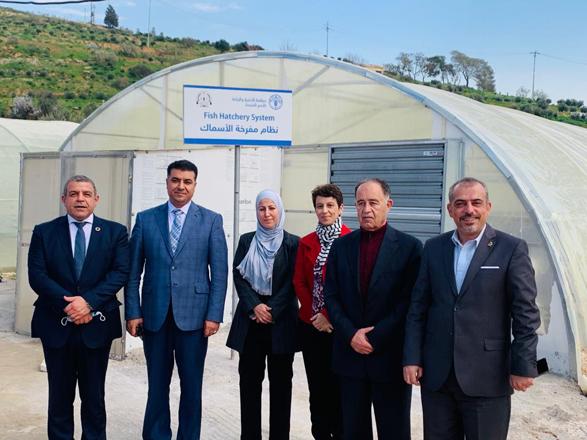You are here
Water-saving systems set up in Sweilma village
By JT - Nov 23,2017 - Last updated at Nov 23,2017

The project will serve Syrians and Jordanians living in the village of Sweilma (Photo courtesy of FAO)
AMMAN — The village of Sweilma in northern Jordan on Thursday launched its first hydroponics and community garden in the presence of representatives from the National Centre for Agricultural Research and Extension (NCARE) and the Food and Agriculture Organisation (FAO), a FAO statement said.
With the support of the FAO, NCARE has collaborated with families and community based organisations (CBO) to install soilless gardening systems with the aim of bettering the lives of vulnerable families.
“It is with great pleasure that I welcome this initiative and all efforts involved in uplifting our community from poverty, especially since it is a community which has welcomed Syrians with open arms and homes,” the head of the CBO was quoted in the statement as saying.
The project is expected to benefit 30 per cent of Syrians and 70 per cent of Jordanians, whose level of food security is compromised by unsafe living conditions in underserved areas the statement said.
The project implementation in collaboration with CBOs optimises the benefits of training, the greenhouse and field technology and maintaining knowledge, the statement said, adding “it also improves the collaboration between beneficiaries of different nationalities and backgrounds”.
Reaching out to communities encourages the integration of newcomers to the country, said the head of Sweilma CBO, describing the amiable relationships building between the participants in the project.
The project also contributes to respond to the water scarcity crisis in Jordan, the statement said, citing the innovative hydroponics technologies used to save up to 30 per cent of water consumption compared with traditional gardening models.
The FAO-funded project is based on providing a strong knowledge base for beneficiaries, in an attempt to safeguard the sustainability of production sites.
Beneficiaries not only learn about crop management and growth, but also about the processes that can help preserve the crops and skills needed to better market their harvests, according to the statement.
Related Articles
AMMAN — The Jordan River Foundation (JRF) has signed a cooperation agreement with the Food and Agriculture Organisation of the United Nation
AMMAN — Dutch Minister for Foreign Trade and Development Cooperation Sigrid Kaag on Saturday visited the Zaatari Refugee Camp where she had
AMMAN — The Representative of the Food and Agriculture Organisation of the United Nations (FAO) in Jordan Nabil Assaf, Agriculture Minister

















